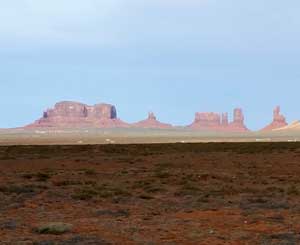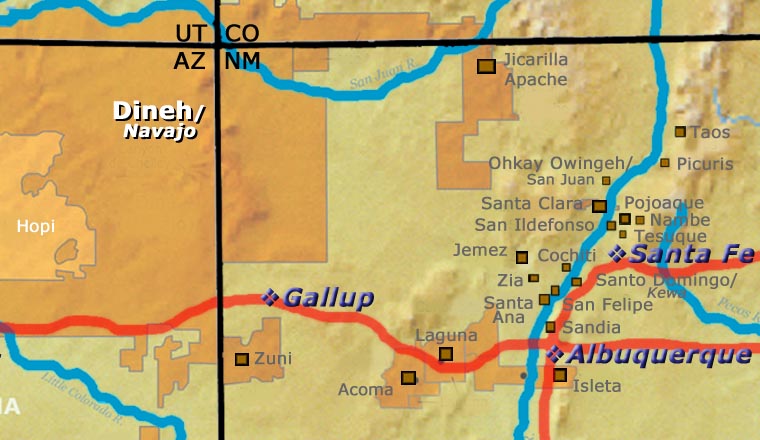
Rose Williams
1915-2015
Dineh (Navajo)


Rose Williams was recognized as one of the matriarchs of modern Dineh pottery and was considered a living treasure. Born in 1915, she was of the Reed People clan. A very traditional Dineh woman who spoke only a few words of English, she lived in Cow Springs, in the Tonalea section of Arizona, in a small frame house.
Rose was trained by her aunt, Grace Barlow. Her early pieces were made for utilitarian use: for hundreds of years Dineh clay-work was made specifically for domestic or ceremonial use only - and many Dineh used Rose as a source for ceremonial pottery. However, the majority of her pottery was made for the marketplace. In the 1980s she began making large cylindrical jars, some measuring more than 24" in height and 12" in diameter. They became her specialty product.
Various family members helped Rose with the collection of the clay and polishing and pitching of the pots. They dug the brown-firing clay from a special place near Black Mesa, screened it to eliminate impurities, and mixed it with sand for temper. Rose used the coil technique to build her pottery, decorating sparsely, perhaps adding a biyo' (a traditional decorative fillet around the rim). She worked in a brush shelter next to her house, firing in a cast-iron stove. The pots were finished inside and out with a coat of pine pitch.
Rose taught successive generations the tradition of Dineh pottery making, including Faye Tso, Silas Claw, Louise Goodman, and Lorena Bartlett. Her three daughters, Alice Williams Cling, Susie Williams Crank, and Sue Williams, are recognized potters, as is her daughter-in-law Lorraine Williams.
Although she herself never entered her work in any shows, dealers and collectors often entered her work for her. Rose earned awards at the Inter-Tribal Indian Ceremonial in Gallup, New Mexico, at the Navajo Craftsman Exhibition at the Museum of Northern Arizona in Flagstaff, and at the Heard Museum in Phoenix. Rose did not sign her work until she was well into her eighties.
100 West San Francisco Street, Santa Fe, New Mexico 87501
(505) 986-1234 - www.andreafisherpottery.com - All Rights Reserved

Dineh

A view in Monument Valley
The Dineh refers to themselves as "Dineh" because the word means "the People" in their language. "Navajo" is a name that was given to them by the early Spanish. Historical and archaeological evidence points to the Dineh people entering the Southwest around 1400 CE. Their oral history still contains stories of that migration as the journey began in eastern Alaska and northwestern Canada centuries after their ancestors made the journey across the Bering Land Bridge from central Asia about 10,000 years ago. They were primarily hunter-gatherers until they came into contact with the Pueblo peoples and learned the basics of survival in this drier climate. Dineh oral history points to a long relationship between the Dineh and the Puebloans as they learned from and traded with each other.
When the Spanish first arrived, the Dineh occupied much of the area between the San Francisco Peaks (in Arizona), Hesperus Mountain and Blanca Peak (in Colorado) and Mount Taylor (in New Mexico). Spanish records indicate they traded bison meat, hides and stone to the Puebloans in exchange for maize and woven cotton goods. It was the Spanish who brought sheep to the New World and the Dineh took to sheep-herding quickly with sheep becoming a form of currency and sign of wealth.
When the Americans arrived in 1846, things began to change. The first fifteen years were marked by broken treaties and increasing raids and animosities on both sides. Finally, Brigadier General James H. Carleton ordered Colonel Kit Carson to round up the Dineh and transport them to Bosque Redondo in eastern New Mexico for internment. Carson succeeded only by engaging in a scorched earth campaign in which his troops swept through Dineh country killing anyone carrying a weapon and destroying any crops, livestock and dwellings they found. Facing starvation and death, the last band of Dineh surrendered at Canyon de Chelly.
Carson's campaign then led straight into "the Long Walk" to Bosque Redondo, a 300-mile trek during which at least 10% of the people died along the way. At Bosque Redondo they discovered the government had not allocated an adequate supply of water, livestock, provisions or firewood to support the 4,000-5,000 people interned there. The Army also did little to protect them from raids by other tribes or by Anglo citizens. The failure was such that the Federal government and the Dineh negotiated a treaty that allowed the people to return to a reservation that was only a shadow of their former territory little more than a couple years after they had left. However, succeeding years have seen additions to the reservation until today it is the largest Native American Reservation in the 48 contiguous states.
Large deposits of uranium were discovered on the Navajo Nation after World War II but the mining that followed ignored basic environmental protection for the workers, waterways and land. The Dineh have made claims of high rates of cancer and lung disease from the environmental contamination but the Federal government has yet to offer comprehensive compensation.
As a semi-nomadic tribe, the Dineh never made much pottery, preferring to use baskets for most storage purposes. They did produce a small amount of pottery for ceremonial uses. Once they were settled on a reservation, pottery began to make more sense. From a beginning making simple wares for colonial estates they transformed their pottery into art. After 1950 Cow Springs brownware began to appear on the market. A trader named Bill Beaver was in Shonto back then, encouraging local potters to "make something different" and the market in the outside world responded positively to those different creations.
Rose Williams is considered the matriarch of modern Dineh pottery. She learned from Grace Barlow (her aunt) and passed her knowledge and experience on to her daughters and many others. Today, most Dineh pottery is heavy, thick-walled and coated with pine pitch (a sealer they also use on many of their baskets). Most Dineh pottery has little in the way of decoration but many pieces have a biyo' (a traditional decorative fillet) around the rim. Unlike Puebloan potters, Dineh potters do not grind up old pot sherds and use them for temper in creating new pottery. Their religion says those pot sherds are infused with the spirits of their ancestors and that forbids the reuse of the material. Similarly, Dineh religion limits Dineh potters to using primarily Dineh carpet designs in the decoration of their pots.
Dineh potters have also created a panoply of folk art, including unfired clay creations called "mud toys." Other Dineh potters, like Christine McHorse, have graduated into the mainstream of American Ceramic Art and easily compete among the finest ceramic artists on Earth.
100 West San Francisco Street, Santa Fe, New Mexico 87501
(505) 986-1234 - www.andreafisherpottery.com - All Rights Reserved
